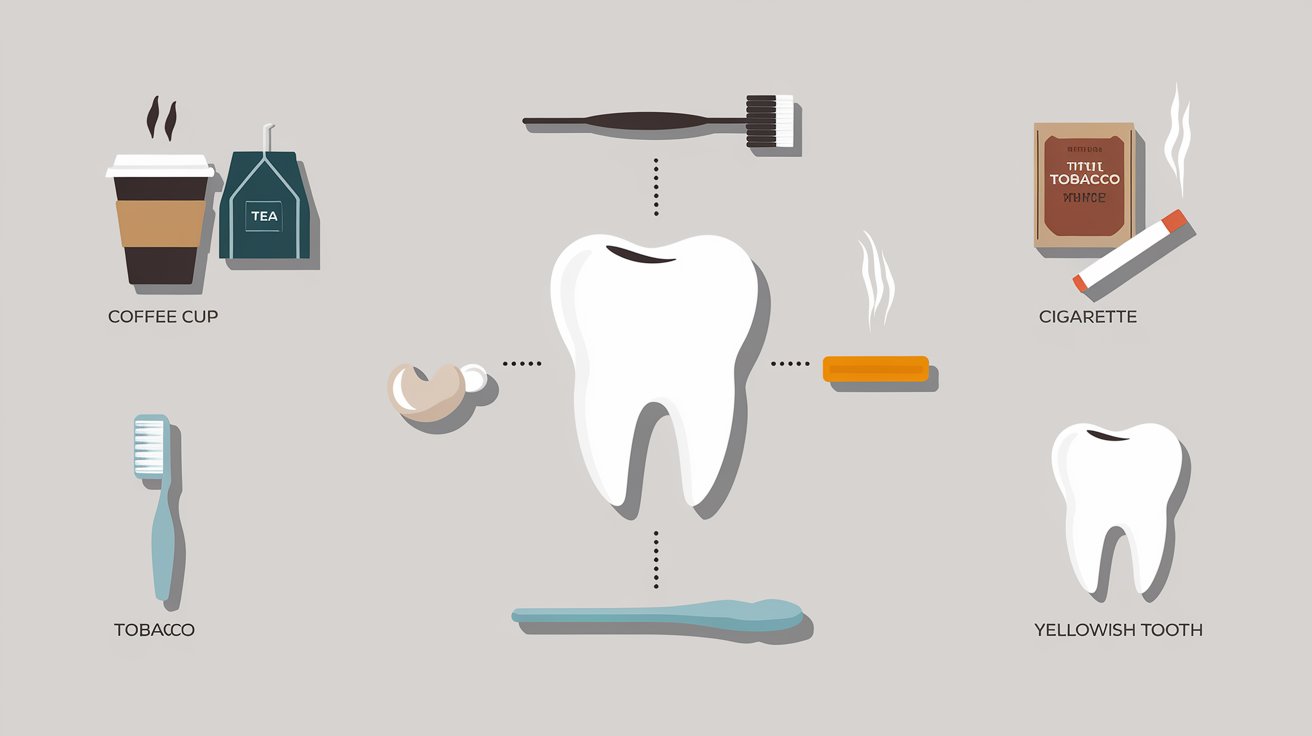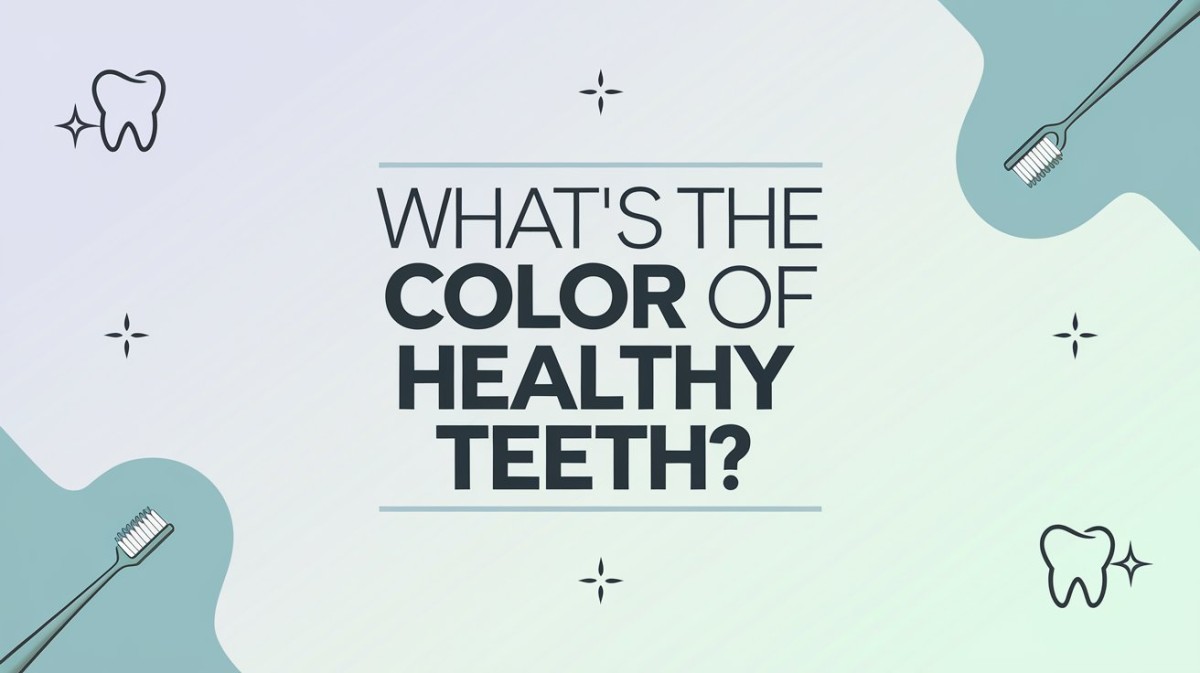At times, you may have asked yourself if your teeth are healthy or not? What do perfectly white teeth portray about one’s dental health that other people may not tell? Teeth are arguably among the first things people discuss as regards your smile, and this calls for the color to be significant in creating magical impressions. But then again, what is the natural color that healthy teeth were meant to be? In this post, you’ll learn what a natural shade of a healthy tooth is, and what factors may affect our teeth color, as well as using valuable recommendations on preserving a beautiful smile.
The Natural Color of Healthy Teeth

As people may think that having healthy teeth means that the teeth are very white, this is not necessarily the case. Natural color range usually go from shades of white up to light yellow color spectrum. All the people have different natural shades, and in order to know the exact shade of the healthy teeth, several factors are considered such as; the thickness of the enamel, dentin color and genetics.
Enamel’s Role
The enamel is the outermost layer of your teeth or the part that is visible when you open you mouth to smile. The degree of transparency depends on its thickness as well as on the appearance of the lower layer known as dentin.
Dentin’s Contribution
Now let me tell you about dentin, the layer beneath enamel It has a pale yellow colour. The enamel is also not very thick in most cases, and so this yellowish color shows through because healthy teeth should have a slight yellowish hue.
Genetic Variations
People are born with variant genetics that directly impact the natural appearance of the teeth. That is why some people’s teeth appear whiter since they possess thicker enamel than people whose teeth appear yellow since they have thinner enamel.
You can also Read: What’s the Colour of Healthy Teeth?
What Makes Teeth Look White or Yellow?

While healthy teeth may have a natural yellowish tone, other factors can influence their color:
1. Stains and Discoloration
❖ Intrinsic Stains: These are within the tooth and results from factors such as; an accident, tetracycline antibiotics use, or excessive fluoride during growing up.
❖ Extrinsic Stains: These are on the surface of the teeth and can be as a result of taking food, taking tea or coffee and even smoking.
2. Aging
Over the years you lose the outermost layer of the teeth known as the enamel which makes the dentin, which is more yellow tooth visible.
3. Dental Hygiene
When brushing and flossing are done poorly you are likely to form plaque which results in making your teeth to be dull.
4. Diet
Many containing vivid shades of color such as oranges, berries, red wine, and soda contain high amounts of acid that will dissolve the outer layer of teeth as well as pigments that discolour teeth.
How to Maintain the Natural Color of Healthy Teeth

Brush and Floss Regularly
❖ Fluoride toothpaste should then be employed in order to enforce the enamel and combat decline of cavities.
❖ Brush at least twice a day and floss daily to reduce the formation and build—up of plaque and subsequent staining.
Limit Stain-Causing Foods and Drinks
❖ Minimze your consumption of coffee, tea, red wine and dark colored sodas.
❖ In case you use them, make sure to have some water in your mouth to rinse it off.
Quit Smoking
Cigarette use not only discolor your teeth but also puts your gum and teeth in risk of contracting some diseases.
Professional Cleaning
It is also important for you to seek professional dental cleaning and check up from your dentist. A professional cleaning can reduce such things as spots and discoloration and make the teeth whiter.
Whitening Treatments
❖ Store bought whitening products can wash off the stains on the surface of the teeth.
❖ For deeper discoloration, consult a dentist for professional whitening treatments.
Use a Straw
To reduce the chances of staining your teeth especially when taking tea, coffee or wine, use a straw.
Stay Hydrated
Many people add drinking water in order to rinse off food residues and to prevent blotting.
When to Worry About Tooth Color
Unfortunately, changes in the color of teeth can sometimes suggest problems concerning the state of the person’s oral hygiene. Consult a dentist if you notice:
❖ Yellow which does not disappear even you have practiced good hygiene habits to your teeth.
❖ Brown or dark areas that may the signs of cavities.
❖ Grayish or black tones that may actually reflect traumatic lesions or a carious process.
❖ Possible initial stages of the demineralization of the enamel.
Debunking Myths About Teeth Color
Myth: Cavity Free Healthy Teeth Are Always White
Cosmetic dental procedures such as teeth whitening can make give patients glow on their smile but white teeth may suggest over bleaching that actually softens the tooth enamel.
Myth: Yellow Teeth Are Unhealthy
A slight yellow hue is perfectly acceptable and in some cases might indicate that the patient has excellent dentin covered by an immensely healthy layer of enamel.
Myth: Whitening Toothpaste Works for Everyone
A non-gel and a fluoride-containing whitening toothpaste only clean the superficial layer of the tooth, and will not alter the intrinsic hue of your dentin.
The Psychological Effects of Color of Teeth
A smile can be said to be bright if it reflects the expectations of young people, good health as well as self-confidence. Also, an absence of black or white spots and the general yellowish color of healthy teeth is not a cause for embarrassment; yet having healthy mouth and removing stains will positively affect one’s self-confidence and social life.
For more such related content, check out our blogs on Dental Blogs.
Conclusion
Cared teeth do not mean having the brightest shade of teeth but the outer shell for the teeth that is the enamel layer should in equal proportion with inner layer that is dentin layer. This means it is possible to actually enhance a smile by following good habits as defined by what would affect the color of your teeth. In case you have not yet realized, everyone has a different natural shade for their teeth and this should not change.
So, what colour is your teeth? are they on the continuum of health? If so, then it may be high time you reconsider your habits and pay more attention to your teeth and gums!
